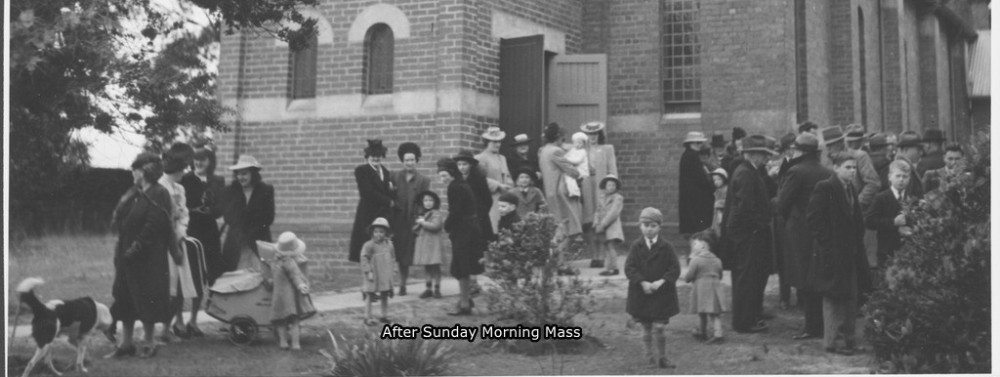Some notes regarding Singleton and Local Government
Background
Singleton’s desire for local government and that of other towns in the colony was driven by the failure of the colonial government to adequately provide services for local road maintenance, drainage and the provision of public amenities. Indeed the passage of the Municipalities Act of 1858 according to the Department of Public Works ‘afforded places like Singleton of forming themselves into municipalities …as the repair of streets in towns is clearly a work which should be performed at the expense of… local authories.’
The 1858 Act ‘provided for a…system of incorporation. The inhabitants of an urban or rural area were to present a petition signed by at least fifty householders. A municipality would be proclaimed …provided that no counter petition containing a greater number of signatures, had been presented… Councils were to levy a general rate of one shilling in the pound of assessed annual value.’ The Act specified the council as being responsible for the ‘provision, care, control and management of public roads, bridges, ferries, public cemeteries, water supply (domestic and irrigation), sewerage, lighting, public hospitals, asylums for destitute children, libraries, museums, botanical gardens, recreation areas and commons.’ The Act restricted franchise and allowed for multiple voting and arguably allowed the wealthiest electors to hold a majority of votes. In spite of continuing political pressure for its change so as to include cumulative voting and a more liberal franchise it was not replaced until 1867.
In spite of a number of attempts from as early as 1861 the residents of Singleton and district could not agree on being ‘incorporated’. The Singleton Times reported in April 1864 that ‘Singleton is one of the most important inland towns in the colony, and yields the Government a large revenue, but she has not got any assistance to enable her to keep her position, facilitate her trade, or even make the town a tolerable place of residence. Our ford…has … unenviable notoriety … our courthouse is a standing disgrace to the community… an ugly, ill ventilated ricky old building … all present are compelled to inhale the most unwholesome atmosphere. These grievances could not exist if we had the power of local self-government… our ‘Governors’ don’t care a straw for our comfort, health or propriety, so long as they can clutch our money without further concern.’
The editorial in the Times stirred local sentiment and some two weeks later a petition in favor of incorporation and signed by 112 residents was lodged. The opponent of the new municipality counter petitioned obtaining 139 signatures to support their claim that the first petition only contained four householders of the rural district proposed to be included within the municipality and as such was not representative of the residents ‘of the said rural district’. There must have been extensive lobbying by the anti incorporation advocates as they were able to convince ten percent of those previously in favor of incorporation to change their minds. The issue dragged on was not resolved until fourteen months later when on the 23 Sept 1865 a new petition with amended boundaries and supported by 101 residents was submitted and was not opposed.
The Municipality was proclaimed on the 30 Jan 1866. It comprised ‘the grants of Benjamin Singleton, 200 acres, and Joseph Bigge, 100 acres and is the land enclosed by Queen Street on the north; Boundary Street, on the east; the rear of the allotments on the southern side of York Street, and along Gowrie Street for about 10 chains on the south; and from this point running northward to the Hunter River, and following the river to the point of commencement.’ The new municipality had a population of approximately 2,160 persons consisted of 301 acres and contained a total of 496 buildings of which 420 were occupied.
The election of the members of the new council was held on the 1 March 1866 when one hundred and twenty qualified residents cast seven hundred and twelve votes. Those elected were Messrs. Alexander Munro, Frederick Williams, James Moore, Hewitt, Brown (e), W.Kingston, P. Cullen, Dr. Newton, and I. Christian. The membership of the new council reflected the mercantile interests of the town with a conspicuous absence of local gentry.
The council wasted no time in getting down to business and four days later held its first meeting at the Caledonia Hotel in George Street, where Alexander Munro was elected as Mayor. The following month it appointed Dr. Edward Geoghegan of Bishopgate Street as Town Clerk and William Cooke Clements of William Street as surveyor and assessor.
Rate Listing
The largest landowner in the town by far was the Burdekin family with 99 properties valued at over £3,000. Samuel Horne is listed as having 20 properties, Mrs. McCosker with 19 and Alexander Munro with 14. The most populous streets were John St, 101 lots, George 88 lots, Elizabeth 77 lots, 33 lots in High Street, 29 in Macquarie and 27 in Bishopgate Street.
The total net value i.e. the rateable value of all the properties was £17,041 and with the rate being one shilling in the pound on the net value (unimproved) provided a potential income for the new municipality of £852. The three highest rated properties were Henry Hewitt’s Royal Hotel in George St. valued at £300 where the health of the newly elected alderman was ‘drunk in bumpers’. William Kingston flourmill in John St owned by the Burdekin family valued at £200, and the Australian Joint Stock Bank building in John Street also valued at £200 and owned by John Glass.Rate Payers
References.
Maitland Mercury 25 July 1861.
Singleton Times 6 April 1864.
Government Gazette 29 April 1864, 12 July 1864 and 30 Jan 1866.
Larcombe, F. A. The origin of Local Government in NSW 1831 – 1858. A History of Local Government in NSW. Volume 1. Adelaide. 1973.
Maiden, H., The History of Local Government in NSW . Sydney 1966.
Terry Callaghan.
June 2000.
